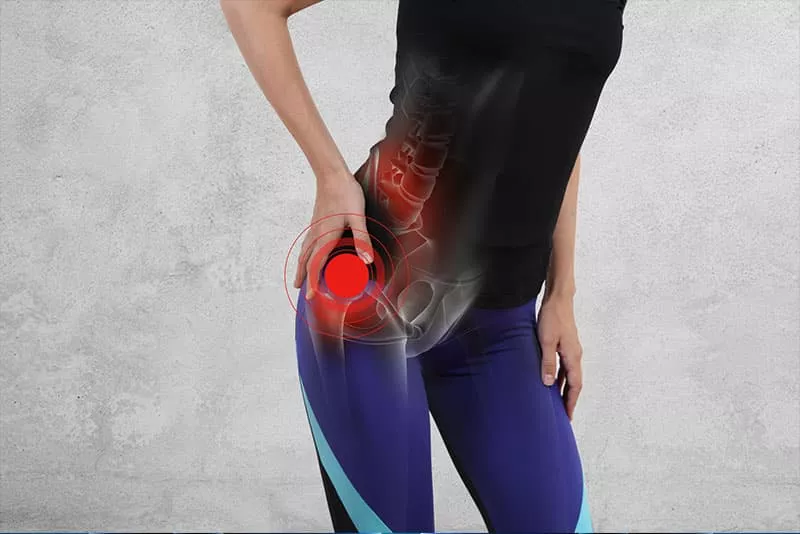
Tips for Healthy Hips

The hip is a true ball-in-socket joint with a wide range of motion which allows us to walk, run, jump, squat, and climb stairs, among other activities. Your hips bear your entire body weight and are in almost constant use. Because the hips are so fundamental to mobility, they are prone to injury and other chronic conditions such as arthritis. Keeping your hips in shape is essential for you to continue leading an active lifestyle, especially as you age.
Common Hip Conditions
- Arthritis. Arthritis is a chronic condition that causes the cartilage in the joints to break down over time. Cartilage is what allows the bones in our joints to glide smoothly during movement—when it breaks down, it can cause painful bone rubbing that can lead to further damage.
- Bursitis. Bursae are fluid-filled sacs that act as cushions around joints. Bursitis happens when these sacs become inflamed, causing pain, stiffness, and swelling.
- Osteonecrosis of the hip. Also called avascular necrosis (AVN), this is a painful condition that results when the blood supply to the head of the femur bone is disrupted. Osteonecrosis often results from an underlying medical issue.
- Injury. Acute injury, such as a fall or sprain, and overuse or wear and tear injuries are both common sources of hip pain.
How to Keep Your Hips Healthy
Not all hip issues can be prevented, but you can reduce your risk of developing a hip condition or hip injury by following a few guidelines.
- Always warm up before exercise and stretch to cool down afterward. The warm up and cool down are just as important, if not more so, than the exercise itself. Warming up increases the heart rate and gets your blood flowing to your muscles. Stopping a workout suddenly without cooling down can cause blood to pool up in your muscles and prevents your body from metabolizing lactic acid, which leads to increased soreness. A few great stretches to keep your hips flexible are straight leg raises, side leg raises, and hip rotation stretches.
- Focus on building up strength in your quadriceps, hamstrings, and gluteal muscles. These three major muscles surround the hips and help support their structure. Because the hips bear your entire body weight, strengthening the muscles surrounding them (including your core muscles) will increase your stability and balance.
- Minimize impact during exercise. High impact exercises like running can be jarring to the joints and lead to injury. If you enjoy jogging, be sure to wear properly fitting shoes and use good form. Running on a softer surface such as a track is also less risky than running on asphalt or concrete roads. The least risky exercises, however, are low impact aerobic activities—stationary biking, yoga, elliptical, swimming, and walking are all great examples.
- If you use alcohol, practice moderation. One of the most common causes of osteonecrosis is excessive alcohol use. This can cause an increase in fatty substances in the blood, which leads to decreased blood supply to the bones.
If you are experiencing hip pain, don’t wait another day to see a doctor. Our team of experts at Orthopedic Associates are ready to help you get back to leading a healthy, active lifestyle. Call us at (314) 569-0612 to schedule an appointment.

